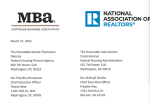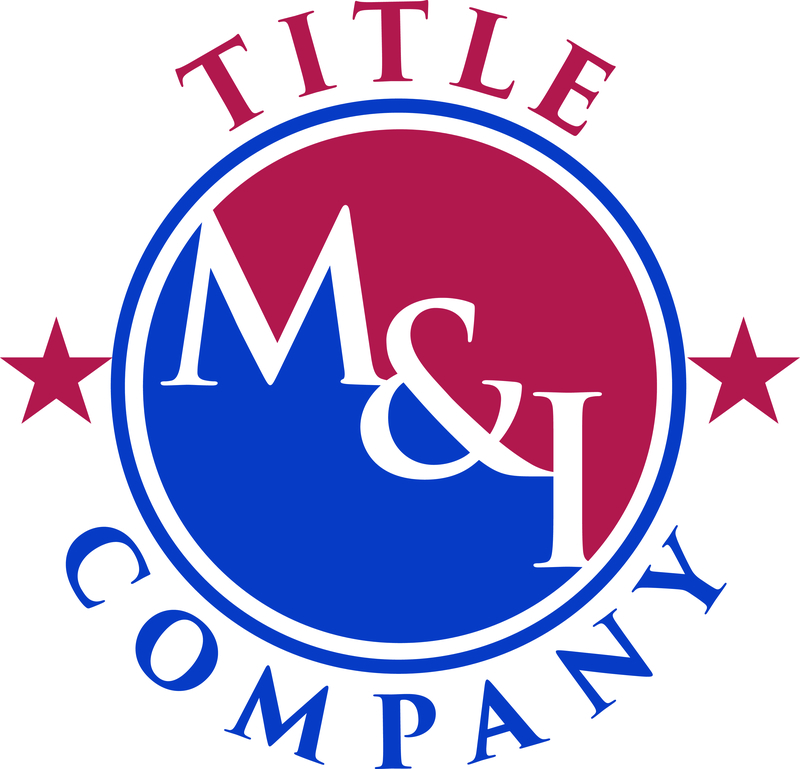By Dennis Norman, on May 22nd, 2024 
The Freddie Mac U.S. Economic Housing and Mortgage Market Outlook for May 2024 reveals significant insights into how mortgage interest rates are impacting the housing market, particularly across different generations. With the 30-year fixed-rate mortgage recently surpassing 7%, many prospective homebuyers find themselves priced out of the market. At the same time, current homeowners are hesitant to sell, clinging to historically low rates secured in 2020 and 2021. According to Freddie Mac’s chart below, over 60% of mortgages have rates below 4%, creating a substantial financial disincentive for homeowners to move, effectively locking them into their current homes. Homeowners who Continue Reading →
By Dennis Norman, on April 10th, 2024 
The ebb and flow of St. Louis’s real estate market are linked to the broader economic currents, and recent weeks have witnessed a significant uptick in mortgage interest rates. In the video below, Traci Everman, Senior Mortgage Banker with Flat Branch Home Loans, does a fantastic job of explaining what is happening and why. Below the video are some highlights and a recap.
See Current (and historical) Mortgage Rates Get a REAL Pre-Approval Now
Here are are few highlights of what Traci’s covers in the video:
Recent Economic Impacts on Mortgage Rates:
Economic reports released over the Continue Reading →
By Dennis Norman, on March 29th, 2024 
One of the issues receiving significant attention following the announcement of the REALTOR® commission suit settlement is the topic of buyer commissions, specifically regarding whether a buyer has to pay them and how lenders will treat the commissions.
In a recent letter to the Federal Housing Finance Agency (FHFA), Federal Housing Administration (FHA), Fannie Mae, and Freddie Mac, NAR and MBA sought confirmation on the treatment of buyer agent commissions following a proposed settlement agreement in the Burnett et al and Moehrl et al cases.
What does this mean for homebuyers? Under the Continue Reading →
By Dennis Norman, on December 19th, 2023 Traci Casper, NAR President
In a recent interview with CNBC, Traci Casper, the President of the National Association of Realtors (NAR), shared her views on the current state of the housing market and the implications of recent commission lawsuits. Her remarks provide an insight into the challenges and changes shaping the real estate industry, particularly relevant for the St. Louis market.
Casper highlighted the impact of fluctuating mortgage rates on the housing market, mentioning, “We do have still such a pent-up buyer pool that’s just been waiting on the sidelines… we are starting to feel them Continue Reading →
By Dennis Norman, on November 30th, 2023 As of yesterday, the mortgage landscape has seen a notable shift, with the interest rate for a 30-year fixed-rate conventional mortgage dropping to 7.13%, marking the lowest point since September 1, 2023, when it was 7.08%. This recent decrease offers a glimmer of hope in the housing market, especially considering the turbulent fluctuations witnessed over the past months.
Equally promising is the rate for 30-year fixed-rate FHA loans, which as of yesterday stood at 6.5%, again the lowest since September 1, 2023, when it recorded a rate of 6.45%. These latest figures suggest a trend that could lead to revitalizing Continue Reading →
By Dennis Norman, on November 14th, 2023 The 30-year fixed mortgage interest rate has experienced a significant drop, reaching 7.4% – the lowest since September 20th, nearly two months ago. This shift provides a much-needed reprieve in the housing market, particularly following the rate’s surge to 8.03% on October 19th, a peak unseen since August 7, 2000, 23 years ago.
The October high had introduced uncertainty and slowed down the real estate market, impacting buyer affordability and seller activity. The recent decline to 7.4%, though still high historically, is a positive sign, potentially reinvigorating interest and activity in the housing market.
This change in rates is key Continue Reading →
By Dennis Norman, on November 14th, 2023 In the world of real estate, down payments have emerged as a significant financial factor for homebuyers across the United States, and St. Louis is no exception. A recent report from LendingTree sheds light on the dynamics of down payments, and it’s essential for prospective buyers and sellers in St. Louis to understand how the local market fares in this regard.
St. Louis Down Payment Statistics:
St. Louis ranks 42nd out of the nation’s 50 largest metropolitan areas in terms of average down payments. This ranking places it 9th in terms of the lowest down payment amount in the 50 Continue Reading →
By Dennis Norman, on November 3rd, 2023 In the ever-evolving landscape of the housing market, prospective homeowners and investors alike keep a close eye on mortgage interest rates. Today, there was a modest decrease in the 30-year fixed-rate mortgage interest rate, now hovering between 7.5% and 7.6%. This shift comes in the wake of the Federal Reserve’s recent decision to maintain the Overnight Federal Funds Rate at a range of 5.25% to 5.50%.
This current rate represents a slight relief from the recent peak in , yet it remains a figure that echoes the rates of over two decades ago. To put this into perspective, the last Continue Reading →
By Dennis Norman, on September 25th, 2023 Interest rates for a 30 year fixed-rate mortgage hit 7.49% today as reported by Mortgage News Daily, marking the highest rate we’ve seen on this type of mortgage in over 20 years. The MND chart below only goes back to 2009 but the bottom chart, from the St Louis Fed Reserve goes all the way back to 1971. As the charts show, the last time mortgage interest rates were at these levels was over 20 years ago in late 2000.
Search St Louis Homes For Sale Search St Louis Upcoming OPEN HOUSES
Mortgage Interest Rates (MND Chart)
Continue Reading →
By Dennis Norman, on August 15th, 2023 As the chart below illustrates, mortgage interest rates on a 30-year fixed rate mortgage hit 7.125% yesterday, the highest rate since April 5, 2002 when the rates were at 7.13%.
If you go back far enough in history, you’ll feel better about todays’ rates…
There is probably very little comfort in this for current home buyers but while we are experiencing the highest mortgage rates in over two decades, if we go back a couple of more decades or so in history we’ll see the current rates aren’t so bad. As the bottom chart below illustrates, over the 52-year period Continue Reading →
By Dennis Norman, on August 7th, 2023 As the chart below illustrates, since returning to 7% around the third week in May, the interest rate has pretty well stayed at the 7% level for a 30-year fixed rate mortgage with the rates for a 15-year fixed rate mortgage about 1/2% better.
Historically-speaking, it’s not that bad….
This won’t necessarily make you feel better if you are a home buyer today but, if we look at the bigger picture (like the bottom chart that goes back to 1971) we’ll see that our current mortgage interest rates are not as bad as they seem, historically speaking. . In fact, Continue Reading →
By Dennis Norman, on April 26th, 2023 The headline of this article is not clickbait nor sensationalism. In fact, it’s based on something that’s about to happen. Fannie Mae, which, along with Freddie-Mac, is involved in almost two-thirds of the home loans in the United States, is set to release a new Loan Level Price Adjustment Matrix (LLPA) on May 1, 2023. The LLPA is used by lenders to determine the cost (interest rate) of a loan for a borrower, and it’s not entirely new, as there’s an existing one already in effect. The new LLPA is similar to the current one, as it also charges varying Continue Reading →
By Dennis Norman, on December 20th, 2022 As the chart below illustrates, yesterday, mortgage interest rates on a 30-year fixed rate conventional mortgage increased slightly to 6.27% after dropping to 6.13% last Thursday, the lowest level in over 3 months.
Historically-speaking, it’s not that bad….
Granted, no one really wants to hear this, but, if we look at the bigger picture (like the bottom chart that goes back to 1971) we’ll see that our current mortgage interest rates aren’t that high. In fact, over the 52-year period depicted on the chart, about 70% of the time mortgage interest rates were higher than they are now. If you’re Continue Reading →
By Dennis Norman, on December 2nd, 2022 This week the Federal Housing Finance Administration (FHFA) announced that the limits for all conforming home loans to be acquired by Fannie Mae and Freddie-Mac (most of the conventional home loans originated) will increase to $726,200 on January 1, 2023. This is an increase of $79,000 for the current loan limit of $647,200.
Also this week, the Federal Housing Administration (FHA) announced that the limits for all FHA loans will increase to between $472,030 and $1,089,300 for single-family homes depending on the area the property is located in. Below are the limits for the low cost mortgage areas as well Continue Reading →
By Dennis Norman, on November 25th, 2022 As the chart below illustrates, on November 10th, mortgage interest rates on a 30-year fixed rate mortgage dropped sharply from 7.22% the day before to 6.62% on the 10th. Since dropping, interest rates have remained around the 6.6% level.
Historically, the current rates are not bad, but that does lessen the impact…
As the bottom chart below shows, interest rates have been above the current levels for over half the period. However, understandably, that doesn’t mean much to first-time home buyers or younger homebuyers as for over the past 10 years the rates have been much less, even to the Continue Reading →
By Dennis Norman, on September 27th, 2022 Today, the interest rate for a 30-year fixed-rate mortgage hit 7.08% marking the first time in over 20-years the rate has gone above 7%. Historically speaking, as the 2nd chart shows, this is not that high of an interest rate and, in fact, lower than the median rate over the past 50 years, however, it’s a very high rate based upon the the recent past.
The affect of interest rates on home prices…
Interest rates just began increasing in the past few months, rising above the 4% level in February, so it will take time to see the impact of Continue Reading →
By Dennis Norman, on August 5th, 2022 I saw dozens and dozens of headlines yesterday reporting that mortgage interest rates had fallen below 5% on a 30-year fixed rate mortgage. The catch is on the day that was reported, yesterday, interest rates were actually above 5% on a 30-year fixed-rate loan. As our chart below shows, the MND Rate index was reporting 5.09% and, below that, Optimalblue was reporting 5.326%. Both of the aforementioned charts are updated daily and considered by many in the industry to have the most current and accurate information.
How could all the big headlines be wrong?
Well, actually the articles I scanned Continue Reading →
By Dennis Norman, on June 14th, 2022 The bond market had one of the worst days in history yesterday resulting in mortgage interest rates on a 30-year fixed rate mortgage hitting 6.0% and above. This is the highest rates have been since November 20, 2008 when the mortgage interest rates were 6.04%, according to Freddie Mac’s Primary Mortgage Market Survey®.
Is there a silver-lining to the higher interest rates?
Given that the reason for the higher interest rates has to do with our high inflation rates and declining economic conditions, it’s hard to find much positive to say about what is happening. Having said that, the one Continue Reading →
By Dennis Norman, on June 7th, 2022 On May 12th the 30-year fixed rate mortgage interest rate hit 5.3%, the highest rates since June 2009, according to Freddie Mac’s Primary Mortgage Market Survey®. As the chart below illustrates, mortgage interest rate have declined the last three consecutive weeks falling to 5.09% at the end of last week, the lowest rate since April 14th when the average interest rate was 5.0%.
Search St Louis Homes For Sale Search St Louis Upcoming OPEN HOUSES Mortgage Interest Rates – 30 and 15-Year Conventional Loans and 5/1 ARM Loan
(click on chart for live, interactive chart)
Continue Reading →
By Dennis Norman, on May 27th, 2022 
On May 12th the 30-year fixed rate mortgage interest rate hit 5.3%, the highest rates since June 2009, according to Freddie Mac’s Primary Mortgage Market Survey®. As the chart below illustrates, mortgage interest rate have declined the last two consecutive weeks falling to 5.10% yesterday, the lowest rate since April 28th.
There are more affordable options…
The chart I selected to show below also shows the mortgage interest rates for 15-year mortgages as well as something almost no one has had a reason to talk about for several years, adjustable rate mortgages (ARM’s). With mortgage interest rates as low as Continue Reading →
By Dennis Norman, on May 9th, 2022 There have been a lot of reports over the past month about rising interest rates (mortgage rates on a 30-year fixed-rate mortgage hit 5.27% last week) as well as rising inflation rates (8.5% in March) and the effect these things will have on the housing market. It’s no doubt they will have some affect on home prices and sales and I have been watching the data on St Louis home prices and sales closely and so far there does not appear to be much impact.
St Louis home sales increase in April from March…
There are two ways we analyze Continue Reading →
By Dennis Norman, on April 14th, 2022 This week it was announced that the U.S. inflation rate in March had increased to a staggering 8.5% the highest rate in over 40 years as illustrated by the chart below. The last time the inflation rate was higher than this was in December 1981 when it hit 8.9%. The “inflation rate” that I’m referring to, and is the most commonly reported, is based upon the Consumer Price Index for All Urban Consumers (CPI-U): U. S. city average. One of the categories included in the CPI-U is “shelter”. The report shows the shelter inflation rate at 5% which, on the Continue Reading →
By Dennis Norman, on February 12th, 2022 Mortgage interest rates were at 3.69% for a 30-year fixed-rate loan as of this past Thursday, February 10, 2022., according to Freddie Mac’s Primary Mortgage Market Survey®. As the chart below illustrates, mortgage interest rates hit a low of 2.77% in August of 2021 and have pretty much been trending upward since.
Within the last few days, there have been a lot of reports in the media projecting mortgage interest rates to go higher this year. A lot of it is based on the current inflation rates which are not good so if the economy and rate of inflation improve, Continue Reading →
By Dennis Norman, on October 23rd, 2021 Mortgage interest rates were at 2.65% for a 30-year fixed-rate loan at the beginning of this year, according to Freddie Mac’s Primary Mortgage Market Survey® and rose through the late winter months and started the spring housing season with rates hitting 3.18% on April 1st. This rate was the highest rate since June, 2020 when rates hit 3.21% and was the highest level for interest rates in 2021. This past week, according to the same market survey, the 30 -year fixed-rate mortgage interest rate hit 3.09%, the highest level in six-months, but still below the peak rate for the year Continue Reading →
By Dennis Norman, on May 5th, 2021 Lately, I’ve noticed several articles questioning whether the kind of crazy real estate market we’ve in for a while now is reminiscent of the early 2000’s which lead to a housing bubble that eventually burst in 2008. Granted, even in St Louis where we tend to not see the market extremes one way or the other like the coasts do, one could get the idea that maybe we’re headed that way with buyer’s fighting over new listings and bidding wars that have homes often selling for over the list price. However, in my humble opinion, this market is very different Continue Reading →
By Dennis Norman, on April 25th, 2021 Mortgage interest rates dropped below 3% this past week with an average interest rate of 2.97% on a 30-year fixed-rate mortgage according to the Freddie Mac Primary Mortgage Market Survey. As the chart below shows, mortgage interest rates have not been below 3% since February 25, 2021 when they also averaged 2.97%. Rates are still up from the record low rate of 2.65% in January, but as you can see on the chart, are still at a rate that is historically low!
Now is the time to buy or perhaps refinance your existing mortgage.
Anyone that has been thinking of Continue Reading →
By Dennis Norman, on December 2nd, 2020 Last week, the Federal Housing Finance Agency (FHFA)announced that effective January 1s, 2021, the maximum loan amounts for Fannie Mae and Freddie Mac conforming loans will be increased from $510,400 to $548,250. Once a home buyers loan amount exceeds the Fannie and Freddie limits, their loan is considered a “jumbo” loan and typically less attractive terms, so an increase in the Fannie and Freddie limits is definitely helpful to home buyers in higher price ranges.
Fannie Mae and Freddie Mac are also increasing the loan limits for loans to purchase multi-family properties as well. The multi-family property limits for 2021 Continue Reading →
By Dennis Norman, on March 18th, 2020 In response to the coronavirus pandemic, the U.S. Dept. of Housing and Urban Development (HUD), as well as the Federal Housing Finance Agency (FHFA) (which oversees Fannie Mae and Freddie Mac), directed their loan servicers to suspect foreclosures and evictions for at least 60 days to help those people affected.
In a statement, Mark Calabria, the Director of the FHFA, said that borrowers affected by the coronavirus who are having difficulty paying their mortgages should reach out to the mortgage servicers as soon as possible.
HUD Secretary Ben Carson said that “The halting of all foreclosure actions and evictions for Continue Reading →
By Dennis Norman, on March 7th, 2020 Mortgage interest rates hit a record low this week with an average interest rate of 3.29% on a 30-year fixed-rate mortgage according to the Freddie Mac Primary Mortgage Market Survey. As the chart below shows, interest rates came close to this level at the end of 2012 but then quickly shot up to over 4.5% shortly after.
Now is the time to buy or at least refinance!
Anyone that has been thinking of buying a home should, if able, shift into high geat and find one now to take advantage of the low rates and the increased buying power that Continue Reading →
By Dennis Norman, on March 4th, 2020 For quite a while now we have enjoyed the positive effects on the real estate market from low mortgage rates but it looks like it’s going to get even better! Yesterday’s announcement by the Fed of the emergency step of lowering the benchmark U.S. interest rate by one-half of one percent, in an effort to offset the negative effect tot eh financial markets from the coronavirus will likely lead to even lower mortgage interest rates.
What’s the connection between the federal funds rate and mortgage interest rates? This is something often asked not only by homebuyers but is even within Continue Reading →
|
Recent Articles
Helpful Real Estate Resources
|






